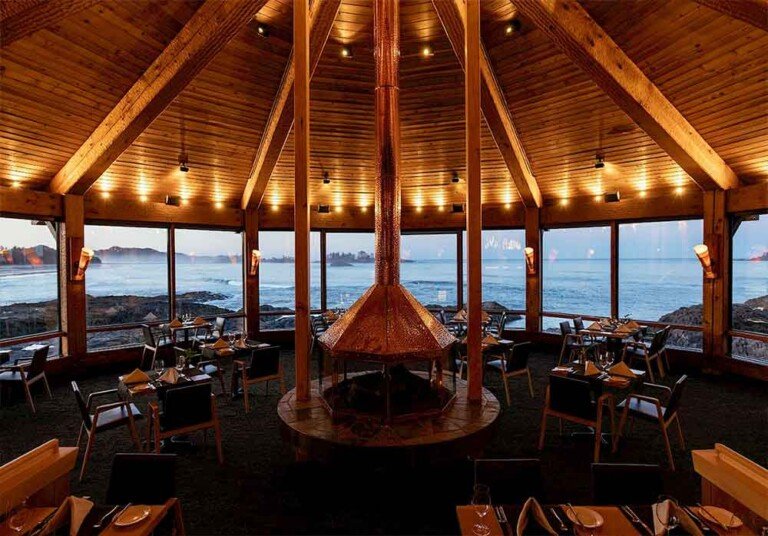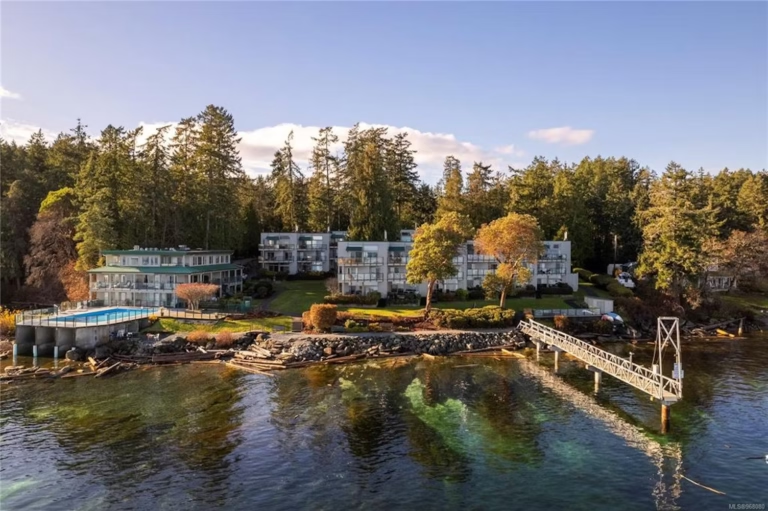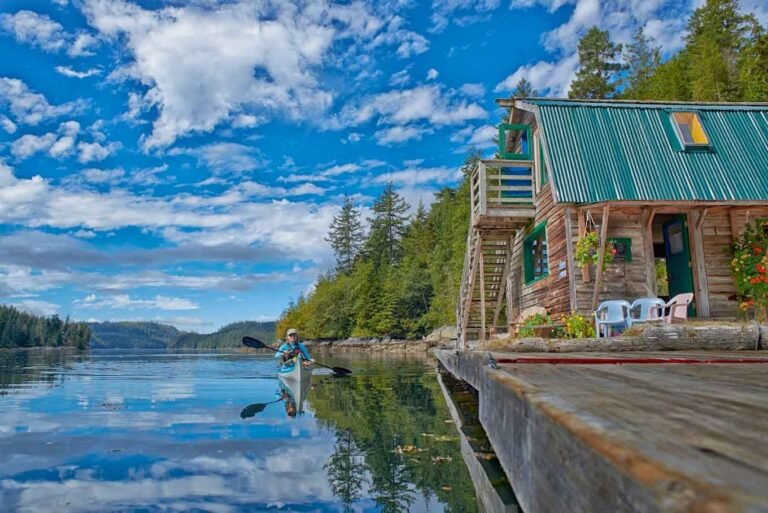River rafting in the Vancouver Coast and Mountains region of British Columbia provides stunning views of glaciers, waterfalls, forests, mountain peaks and canyons, where majestic peaks and rugged coastal valleys provide the perfect natural landscape for great river exploring.
Between Vancouver and the ski resort village of Whistler, the Elaho River and the Cheakamus River flow into the Squamish River, which makes its way south into Howe Sound.
Only a short drive from Vancouver, the Elaho-Squamish and Cheakamus Rivers offer exciting river rafting. Four rivers merge into one at the northern outskirts of Squamish. The Cheakamus and Cheekye Rivers join forces in quick succession, then the Mamquam River swells the volume in the Squamish just before its confluence with Howe Sound. Many of the guided trips include riverside salmon barbeques.
Guided rafting trips are available through rafting companies operating out of Vancouver and Whistler. Equipment and transportation is provided, and all guides are professionally certified. Although it’s entirely possible to run these rivers unaccompanied, the majority of rafters opt for the services of a certified guide, at least for the first time.
Squamish & Elaho River System
The Upper Elaho, Squamish, and Ashlu rivers can challenge the best whitewater rafters and kayakers in the world, ranging from Class II to Class lll, with an upgrade to class IV during high waters. Depending on the level of the river, the wild Elaho River has drops, mini-boulders, holes, boulder garden rapids, a few eddies, and the Rock Garden. Cutting through a deep canyon on the 2- to 3-hour adventure, you’ll raft approximately 16 kms (10 miles) of British Columbia’s most inspiring wilderness, with glaciers and waterfalls that cascade hundreds of feet to the river.
Guided rafting tours are offered on the Elaho and Squamish Rivers. The wild rivers of the Squamish River watershed are suitable for people of all levels of experience. The smoother and easier run on the Squamish River serves up the Steamroller Rapid, holes, swift flowing water and standing waves.
The upper section features the exciting Class lll to lV Devil’s Elbow rapids. Ahead of you lies two impressive curlers known as Dynamic and Disaster. From there, you continue through a multitude of Class II, III, and IV rapids. Along the way, adrenaline junkies have the option to jump off a cliff or swim through rapids. Ask your guide to hit what has been called Canada’s largest standing wave – on the Elaho River!
The overall trip length will vary between 45 minutes and 3 hours – the average would be about 2 hours. Occasionally the trips stop at the confluence of the Cheakamus and Squamish Rivers for hot drinks or regrouping.
Cheakamus River
As it flows through Paradise Valley, the Cheakamus River is a clear emerald colour, except in those places where it billows with whitewater. Water levels in the river are controlled by a BC Hydro dam farther upstream on Daisy Lake near Whistler. A steady flow is guaranteed, as much for the health of fish stocks in the river (a debatable point with local anglers) as for paddling and rafting. Caution is suggested should you wish to paddle below the bridge next to the SunWolf Outdoors Centre on the east bank of the river. Boulders pushed into the river from the nearby Cheekye River have created a drop below the bridge that may be more than less-experienced rafters can handle.
The best river rafting around Whistler happens on the Cheakamus River, and with its close proximity to Whistler, the Cheakamus River is Whistler’s most popular river rafting run, suitable for both novice and experienced whitewater junkies. The Cheakamus River is graded a Class ll to lll, with a Class lV drop, and features lively and constant rapids that are guaranteed to provide a thrill for most of the trip, as is expected of a good whitewater river. The Cheakamus does have some calmer sections, and offers holes, standing waves, fast water, and a number of drops, including Bush’s Drop, Race Course Drop and the Culliton Creek Drop, a Class III section at the midpoint where Culliton Creek enters the Cheakamus River. Unlike the nearby Squamish River into which it flows, water in the Cheakamus is clear year-round.
The 2 to 3-hour rafting adventure on the beautiful Cheakamus River provides views of the Tantalus Mountains and Mount Garibaldi to the east. The Lower Cheakamus River is a fabulous venue for intermediate paddlers and a great place to float in the winter while observing the bald eagles gathered to feed on the spent chum salmon that spawn in the Squamish River. Other wildlife that may be observed on the Cheakamus River include deer and black bears.
Heli-Rafting
Experience a unique combination of sightseeing by helicopter and thrill seeking by wilderness whitewater rafting when you go Heli-Rafting in the scenic Squamish Valley, just 1 hour from Vancouver & Whistler. Personal headsets allow you to enjoy the fully narrated scenic flight while you marvel at the sight of lush green valleys, snow capped mountain peaks, thunderous waterfalls, wildlife, and the Squamish and Elaho rivers. This spectacular aerial view gives you a heart pumping perspective of your rafting route, and is sure to add to the level of anticipation of your rafting trip on the Elaho and Squamish Rivers.
Rafting and Bald Eagle Viewing – Squamish Estuary
Combine the excitement of rafting with the thrill of wildlife viewing from a raft. Witness the gathering of over 3,000 bald eagles in the Squamish River Estuary every November to January – the densest gathering of bald eagles in the world. The eagles gather in a short corridor of the Cheakamus and Squamish Rivers near Brackendale to gorge on the carcasses of 400,000 chum salmon that swam up the river to spawn and die. The raft is ideal for eagle-watching, quietly floating past the majestic raptors without disturbing them. Walk on the bank, and they would all fly away. Operators in Squamish offer trips through the eagle-viewing season, but are mindful of the etiquette of river use around the eagles, so as not to disturb them, particularly around the peak eagle feeding times. The chum salmon run begins here each September. The eagles are present from November through March, but are most abundant in January.
Eagles gather in the bare branches of the black cottonwood trees that tower above the Squamish River. The trees stand some distance away on the far shore, across the wide, milk-grey waters. Some trees are decorated with a dozen or more eagles, mute and motionless. As your eyes scan the forest perimeter, you can make out hundreds of such shapes. Although many of the eagles will head north in summer, others nest here year-round, as the bundles of twigs that bulge out near the tops of some of the cottonwoods attest. On the menu is the salmon carrion left from late fall coho runs on the Squamish River. In the early morning hours, eagles frequent the banks on both sides of the river.
Over the past 20 years, Brackendale sculptor Thor Froslev has led the fight for the protection of the Squamish winter eagle habitat. Six of his large wooden carvings, on which the aristocratic profile of an eagle is represented, stand at strategic points in the vicinity of the birds’ winter home, including on Hwy 99. In 1996, the BC government announced the creation of the 1,482-acre (600-ha) the Brackendale Eagle Reserve for the eagles, which can number more than 3,769 in winter. Froslev has now turned to monitoring the health of the Squamish River. Without healthy salmon runs, there would be far fewer eagles drawn to feed in this relatively small but vital stretch of water.
Froslev maintains his vigilance from his home in the Brackendale Art Gallery, which he established in 1969. Located on Government Road several kilometres north of the dike where most eagle viewing takes place, he has assembled a coterie of artists to conduct workshops and concerts, with the eagles and river as the core theme. As well, the Brackendale Gallery offers daily walking tours, led by naturalists, of the prime eagle-viewing areas. The gallery also arranges river tours that give visitors a chance to see eagles in more secluded habitats such as nearby Baynes Island. Brackendale Winter Eagle Festival in January organizes the annual January eagle count, and also has an eagle art show and an eagle photography workshop.




